In 2024, chatbot design is changing significantly. Chatbots are no longer intrusive, one-size-fits-all bots. They have evolved into sophisticated AI agents that perform tasks seamlessly across multiple channels.
Discover the best chatbot practices to boost user engagement. From non-invasive deployment to specialized AI, these strategies will transform your chatbot into a powerful asset driving real business value.
The Evolution and Importance of Modern Chatbots
The chatbot landscape has transformed remarkably since its inception. Initially simple rule-based programs, chatbots have evolved into sophisticated AI-powered assistants that handle complex tasks and interactions. This change reflects evolving user and business expectations.
In 2024, chatbots are no longer basic customer service tools. They have become integral parts of business strategies, offering personalized experiences and efficient problem-solving capabilities. Today's chatbots are more intelligent and context-aware.
As AI technology advances, chatbots can handle more complex tasks. Modern chatbots can process orders, offer personalized recommendations, and assist in decision-making processes. This expanded functionality makes them invaluable for businesses aiming to stay competitive.
To fully realize the potential of chatbots in 2024, businesses need to move beyond outdated practices. The focus is now on creating non-invasive, personalized, and transparent chatbot experiences.
1. Embracing Non-Invasive Chatbot Practices
Invasive chatbots that pop up uninvited on every webpage are now a thing of the past. In 2024, the focus is on creating chatbot experiences that respect user autonomy and enhance browsing without being intrusive.
Previously, invasive chatbots were considered innovative. However, they often frustrated users by interrupting their browsing journey, creating barriers between visitors and the content they sought. This approach irritated users, leading to higher bounce rates and decreased engagement.
Some websites even made chatbots with sounds! Horrible.
Modern chatbot design emphasizes strategic placement. Rather than deploying chatbots across an entire website, businesses now focus on placing them on relevant pages where they provide the most value:
- A chatbot on a product page might offer detailed specifications or comparisons.
- One on a support page could guide users through troubleshooting steps.
- A chatbot on a checkout page can assist with the purchasing process, answer last-minute questions, or provide information about shipping and returns.
This targeted approach ensures chatbots appear when and where they're most useful. Aligning chatbot placement with user intent improves the relevance and effectiveness of interactions.
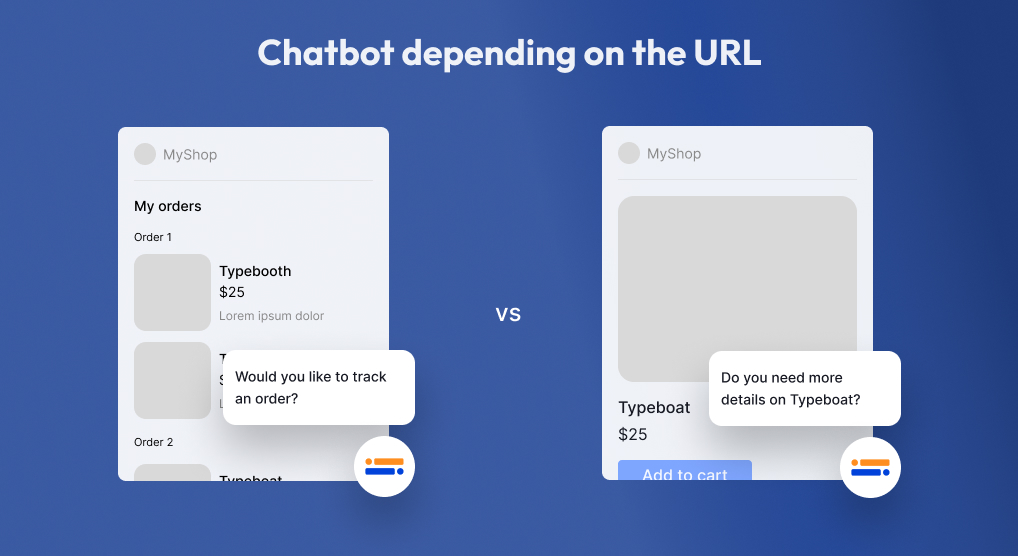
Non-invasive chatbots often incorporate user-initiated interactions. Instead of automatically popping up, they might appear as a subtle icon in the screen's corner, allowing users to engage on their terms. This respect for user autonomy creates a positive perception of the chatbot as a helpful tool rather than an annoying interruption.
2. Personalization and Interconnectivity: The Heart of Modern Chatbots
In 2024, personalization and interconnectivity are crucial elements in chatbot design. These features transform chatbots from generic information providers into intelligent assistants, offering tailored interactions based on individual user needs and preferences.
Personalization in chatbots goes beyond addressing users by name. It involves leveraging data from various sources to create a comprehensive understanding of each user.
This could include their browsing history, past purchases, support tickets, and real-time behavior on the website. Analyzing this data allows chatbots to offer highly relevant suggestions, anticipate needs, and provide context-aware responses.
For instance, a chatbot on an e-commerce site might:
- Recognize a returning customer.
- Offer personalized product recommendations.
- Provide updates on orders.
- Suggest complementary products.
- Offer loyalty rewards.
All this happens without the user navigating through multiple pages or menus.
The key to achieving this level of personalization lies in interconnectivity. Modern chatbots are deeply integrated with various business systems like CRMs, product databases, and order management systems.
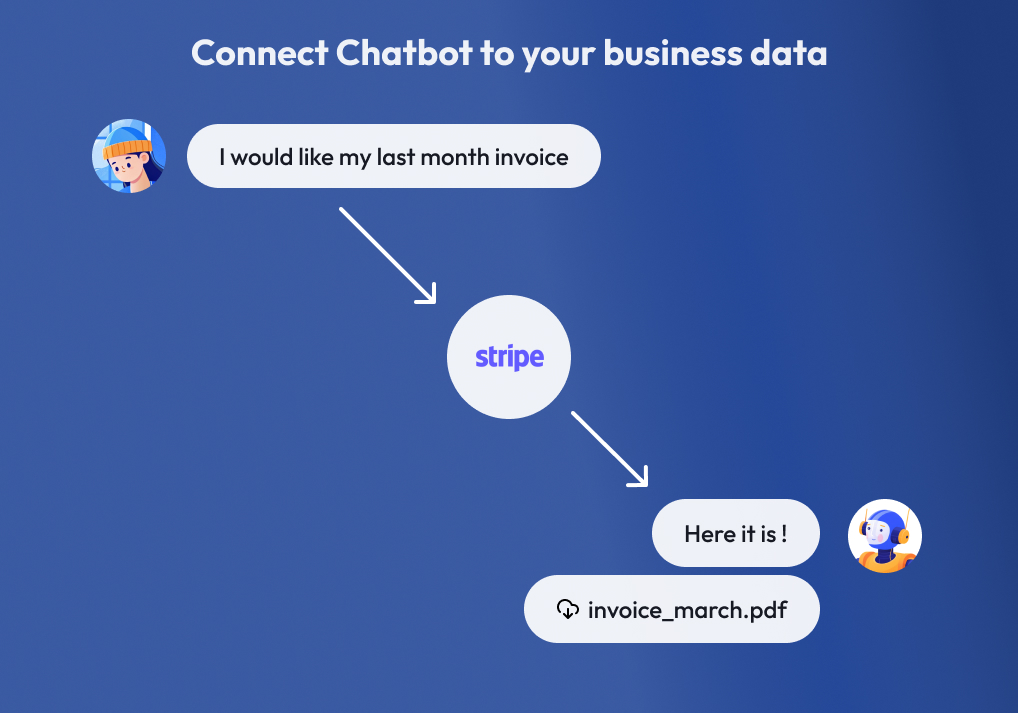
This interconnected ecosystem allows chatbots to access and use a wealth of information in real-time, enabling more accurate and helpful responses.
Consider a scenario where a customer inquires about the status of their order. An interconnected chatbot can:
- Seamlessly pull information from the order management system.
- Provide real-time updates.
- Offer solutions if there are any order issues.
This level of integration improves user experience and reduces the workload on human customer service representatives.
Personalization and interconnectivity also benefit businesses. They gain valuable insights from personalized interactions, helping them understand customer preferences, identify trends, and make data-driven decisions to improve products or services.
By embracing personalization and interconnectivity, businesses create chatbot experiences that feel like conversations with a knowledgeable assistant who understands and anticipates needs. This approach enhances user satisfaction, drives customer loyalty, and promotes business growth.
Check our article on how to build a chatbot with custom knowledge base to lean how to implement personalization and interconnectivity in your chatbot.
3. Multi-Channel Integration: Expanding Chatbot Reach and Value
In 2024, multi-channel integration has become essential for effective chatbot deployment. This approach recognizes that users interact with businesses across various platforms and devices, ensuring a consistent and seamless experience at all touchpoints.
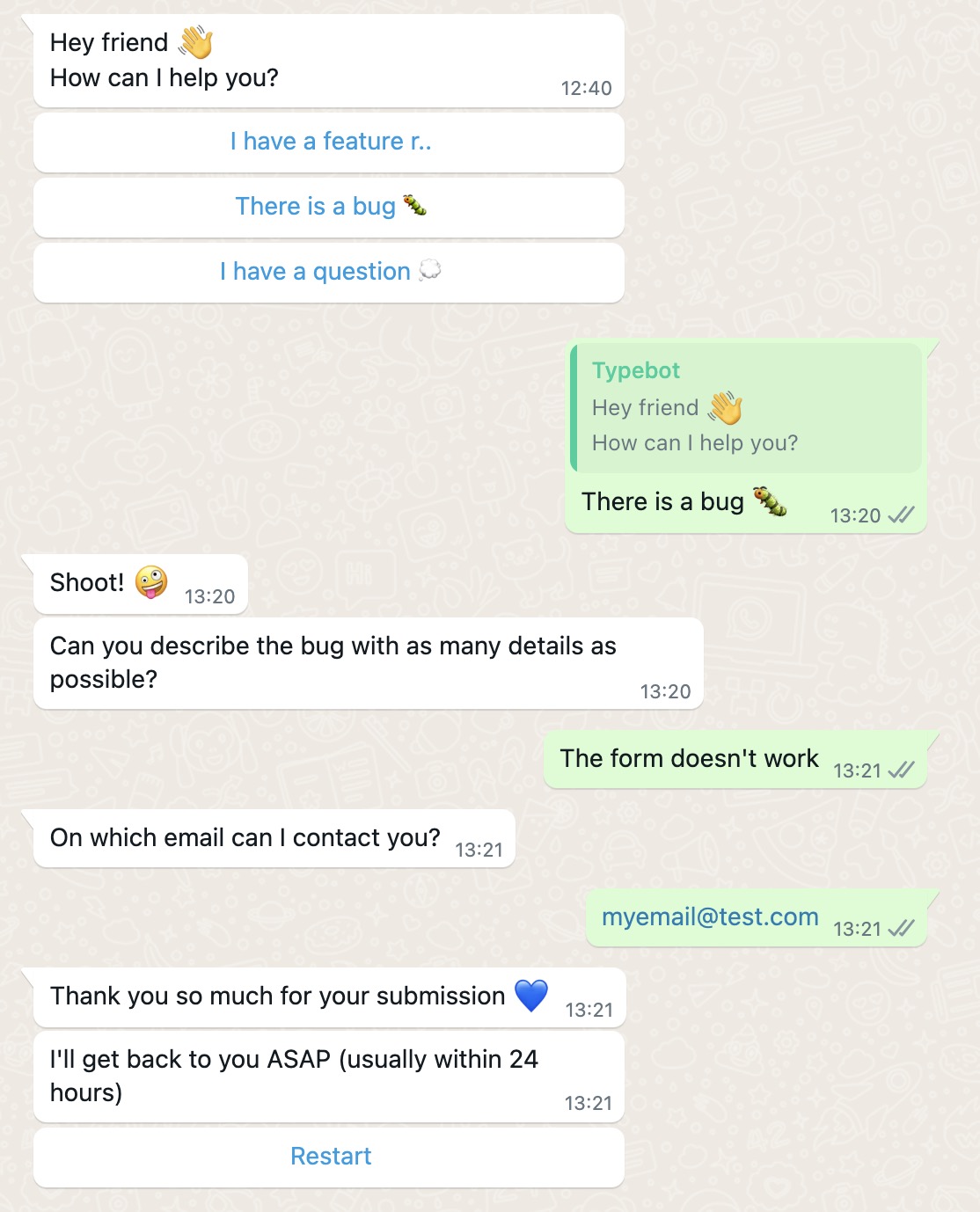
Multi-channel integration involves deploying chatbots across platforms like websites, mobile apps, social media, messaging apps, and voice assistants. This strategy allows businesses to meet customers where they are, providing assistance through their preferred communication channels.
For example, a customer might start a conversation with a chatbot on WhatsApp, continue it on the website, and finish the interaction by email. A well-integrated system ensures that the context and information from these interactions are preserved across channels.
4. Seamless Human Handoff: Enhancing Chatbot Value Through Human Expertise
While AI-powered chatbots handle complex queries well, some scenarios still require human intervention. In 2024, seamlessly routing conversations from chatbots to human agents is crucial for maintaining high-quality interactions.
A human fallback in chatbot systems acts as a safety net. It ensures users aren't frustrated when their queries exceed the bot's capabilities. This feature improves user satisfaction and increases the perceived value of the chatbot service.
Several situations necessitate routing to a human:
- Complex inquiries requiring nuanced understanding.
- Emotionally charged conversations.
- Scenarios where the chatbot’s confidence in its response is low.
- High-value customers or sensitive issues, like financial transactions, need immediate human attention.
For example, in a banking chatbot, a simple balance inquiry can be handled automatically. However, if a customer reports suspicious activity on their account, the conversation should be immediately escalated to a human fraud specialist. This ensures critical issues receive the necessary expertise.
Effective human routing depends on a seamless transition from bot to human. This process should be smooth and transparent, maintaining context and conversation history to avoid asking customers to repeat information.
A well-designed handoff system might work as follows:
- The chatbot recognizes it cannot adequately address the user’s query.
- It informs the user of the transfer to a human agent.
- The system identifies an available agent with the right expertise.
- The agent receives the full conversation history and relevant customer information.
- The user connects to the agent, who can seamlessly continue the conversation.
This approach ensures the transition feels natural and the human agent is fully prepared to assist without delay.
Human interactions can serve as valuable learning opportunities for the chatbot. By analyzing how human agents handle complex queries, the AI can improve and handle a wider range of scenarios in the future.
5. Enhancing UX with Buttons: Streamlining Chatbot Interactions
In 2024, buttons have become significant in chatbot design. These interactive elements enhance user experience by simplifying interactions and guiding users through conversations efficiently.
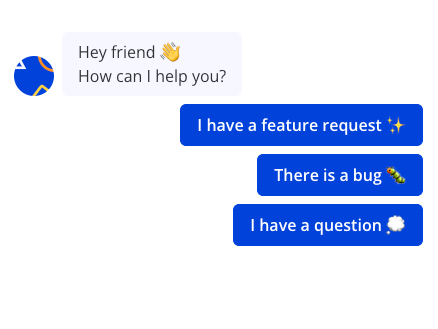
Buttons in chatbot interfaces offer several advantages over free-form text inputs. They provide clear options, reducing ambiguity and misunderstandings. This is especially useful when a chatbot needs to gather specific information or guide users through structured processes.
For example, a customer service chatbot might present buttons for common issues like:
- Track Order
- Return Item
- Speak to Representative
This approach speeds up interaction and helps users who might not know how to phrase their query.
Designing effective button-based interactions requires careful consideration:
- Options should be concise, relevant, and easy to understand.
- Buttons should offer a balanced set of choices covering the most likely user intents without overwhelming them.
A well-designed button interaction might look like this:
Chatbot: "How can I assist you today?" Buttons: [Check Order Status] [Product Information] [Returns & Refunds] [Other Inquiries]
User selects "Check Order Status"
Chatbot: "Great, I can help you with that. Please provide your order number or the email address used for the purchase." Buttons: [I have the order number] [Use my email address] [I don't have this information]
This structure guides the user step by step, making it easier to get the needed information.
Buttons can also be used in decision trees, allowing users to navigate complex processes easily. For instance, a troubleshooting chatbot might use button-based questions to narrow down the issue before providing a solution or escalating to a human agent.
However, balancing button-based interactions and free-form text input is important. While buttons streamline many interactions, users should also have the option to type their queries directly when needed. This hybrid approach ensures the chatbot can handle structured and unstructured conversations effectively.

No trial. Generous free plan.
6. Task Performance and Specialized AI Agents: Improving Chatbot Capabilities
Chatbots have advanced significantly with the integration of task performance capabilities and specialized AI agents. This evolution has transformed chatbots into powerful tools capable of executing complex tasks and providing expert-level assistance across various domains.
Task performance capabilities are a game-changer for chatbots. Modern chatbots can now take action on behalf of users. This includes scheduling appointments, processing orders, updating account information, or conducting complex analyses.
For instance, a chatbot for a financial institution might not only answer questions about loan applications but also:
- Guide the user through the entire application process.
- Pull credit reports.
- Calculate loan terms.
- Submit the application for approval.
This functionality reduces the workload on human staff and provides a more efficient user experience.
Specialized AI agents take this concept further. These AI systems excel in specific tasks or domains. By integrating specialized agents, chatbots can offer expert-level assistance in areas typically requiring human specialists.
Consider a healthcare chatbot incorporating a specialized AI agent trained in symptom analysis. When a user describes their symptoms, the agent can:
- Provide a preliminary assessment.
- Suggest potential causes.
- Recommend immediate medical attention or a non-urgent appointment.
Another example is a tech support chatbot leveraging specialized agents for various product lines or technical issues. When a user reports a problem with a specific device, the chatbot can engage the relevant specialized agent for in-depth troubleshooting guidance.
By incorporating task performance capabilities and specialized AI agents, businesses can create chatbots offering unprecedented levels of assistance and expertise. This enhances user satisfaction and opens new possibilities for automation and efficiency across various business processes.
7. Transparency in User Interactions: Building Trust with Chatbot Users
Transparency has become crucial in fostering user trust and engagement with chatbots. As chatbots handle more complex tasks, it's important to be clear about the nature of the interaction and the AI system's capabilities.
Transparency in chatbot interactions revolves around two key aspects: informing users when they're interacting with an AI versus a human, and clearly communicating when the chatbot is performing a task on their behalf.
Distinguishing Between AI and Human Interactions
Honesty is the best policy when distinguishing between AI and human interactions. Users appreciate knowing if they're conversing with an AI or a human agent. This helps set appropriate expectations and prevents frustration.
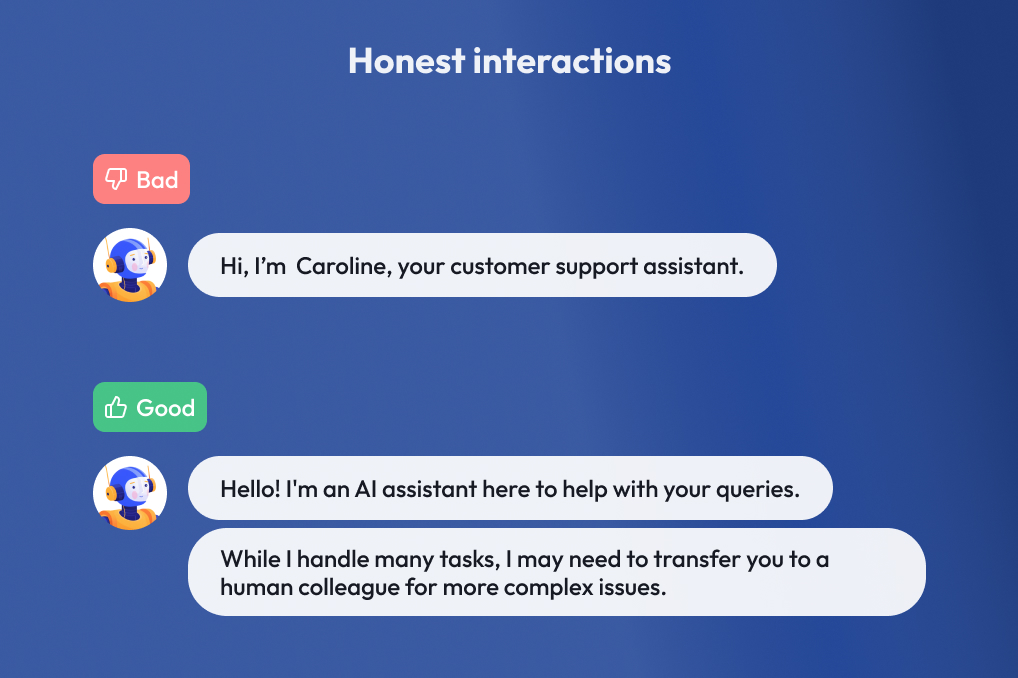
For example, a chatbot might introduce itself like this:
"Hello! I'm an AI assistant here to help with your queries. While I handle many tasks, I may need to transfer you to a human colleague for more complex issues."
This approach sets clear expectations and reassures users that human support is available if needed.
Communicating During Task Performance
It's equally important to communicate when the chatbot is performing a task. Users should be informed about what action is being taken, why it's necessary, and the expected outcome. This is crucial when the chatbot accesses personal information or makes changes to user accounts.
For instance, if a chatbot is processing a return request, it might say:
"I'm now processing your return request for order #12345. This involves checking your order details, verifying the return policy, and generating a return label. This should take about 2 minutes. I'll update you once it's complete."
This level of detail keeps the user informed and engaged, reducing anxiety and building confidence.
Acknowledging AI Limitations
Transparency also means acknowledging the limitations of the AI. If a chatbot is unsure about an answer or unable to perform a requested task, it should clearly communicate this. For example:
"I'm sorry, but I'm not confident about the answer to your question regarding tax implications. To ensure you receive accurate information, I'd like to connect you with one of our tax specialists. Is that okay?"
This approach demonstrates honesty and a commitment to providing accurate information, enhancing user trust.
Building trust through transparency involves creating a more human-like interaction. By clearly communicating its actions and limitations, a chatbot can create a more natural and comfortable user experience.
8. Integrating Chatbot Metrics: Measuring Success and Driving Improvement
Key metrics for chatbot performance extend beyond simple engagement statistics. While metrics like conversation volume and user ratings are important, businesses now focus on more nuanced indicators of success:
- Task Completion Rate: The percentage of user queries that the chatbot resolves without human intervention.
- Conversation Duration: The average length of chatbot interactions, indicating efficiency or potential user frustration.
- Handoff Rate: The frequency of conversations transferred to human agents, highlighting areas needing improvement.
- User Sentiment Analysis: Evaluating the emotional tone of user messages to gauge satisfaction and identify issues.
- Return on Investment (ROI): Measuring the financial impact in terms of cost savings, increased sales, or improved customer retention.
Integrating these chatbot-specific metrics with broader marketing and customer support data provides a more comprehensive picture. For instance, businesses can correlate chatbot interactions with customer lifetime value, conversion rates, and overall customer satisfaction scores.
This integration often requires sophisticated analytics tools and dashboards that pull data from various sources. Many businesses leverage AI-powered analytics platforms to process vast data amounts and provide actionable insights.
For example, an e-commerce company might use an integrated analytics system to track how chatbot interactions influence purchasing decisions. They could analyze metrics like:
- The correlation between chatbot engagement and conversion rates.
- The impact of chatbot-assisted product recommendations on average order value.
- How chatbot interactions affect customer return rates and long-term loyalty.
Combining these insights with broader marketing data offers a deeper understanding of the chatbot's role in the customer journey and its overall impact on business performance.
In a customer support context, integrated metrics can reveal how chatbot interactions affect overall support efficiency and customer satisfaction. Businesses might track:
- Reduction in average handling time for customer queries.
- Changes in customer satisfaction scores after chatbot implementation.
- The impact of chatbot use on support team workload and efficiency.
As we conclude our exploration of chatbot best practices for 2024, it's clear that AI-assisted customer interaction is rapidly evolving. From non-invasive deployment to task-performing capabilities, and from multi-channel integration to transparent interactions, these practices are reshaping how businesses engage with customers.
By embracing these strategies and continually measuring their impact through integrated metrics, companies can create chatbot experiences that not only meet but exceed user expectations.

No trial. Generous free plan.